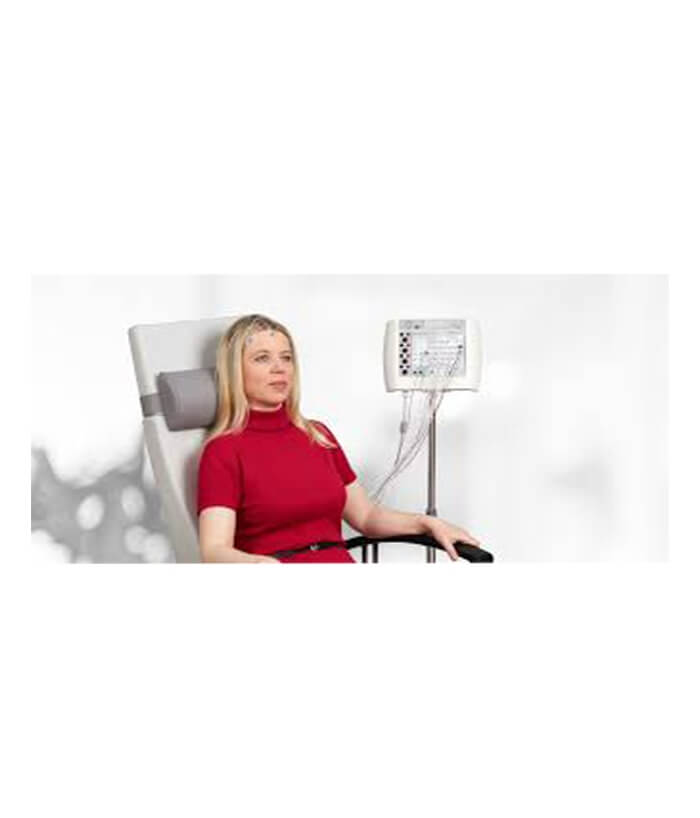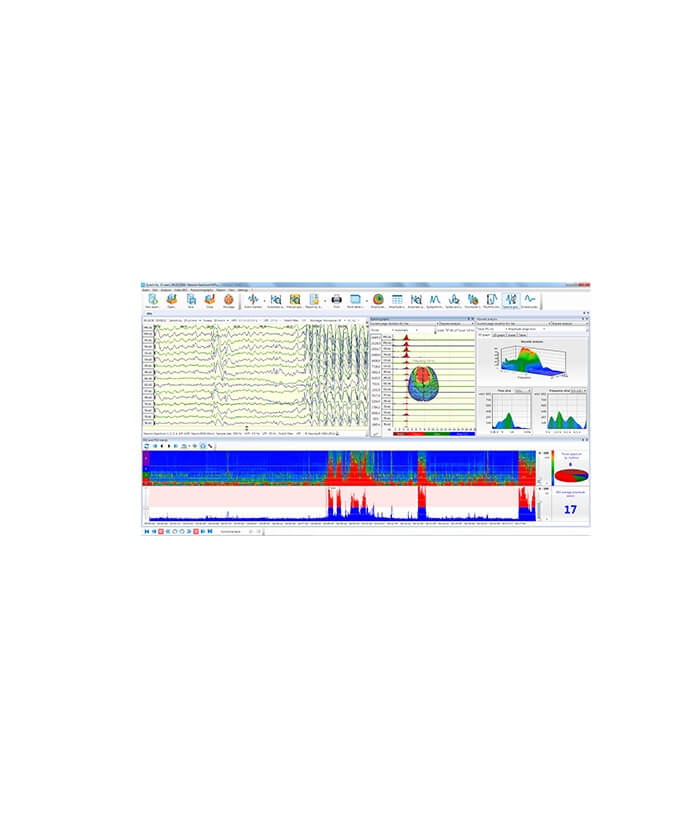What is electromyography?
Electromyography (EMG) is a non-invasive procedure that allows the evaluation of peripheral nerves and muscle activity, extremely useful in establishing the diagnosis of neuromuscular disorders. At the Centrokinetic clinic, this investigation is performed with the Nihon Cohden device within the neurology consultation.
 |  |
The electromyographic examination consists of two parts, described below. It is not mandatory for the doctor to perform both investigations, their need depending on the patient's ailments. Both tests are well tolerated by most patients, producing only minor discomfort, and have no significant risks to subsequent health. The discomfort is caused by the application of electric current and depends on the parameters of the current user.
The first part of the procedure is electroneurography, i.e., the study of nerve conduction, and involves stimulating the nerves by a small electrical discharge at various points along their path. The doctor applies small electrodes to the skin (small metal disks that stick to the skin) or electrode needles (very fine needles) for recording, usually on the hand and foot, and applies a small electric shock to the skin, in another area of the member where the registration is made. The sensation may or may not be painful. Because each member has several nerves that require evaluation, the procedure will be repeated 3, 4, or more times. Along the way, the test will be interrupted several times to allow the doctor to make measurements and calculations.
 |  |
The second part of the procedure is the electromyography itself, i.e., the muscular examination with a needle, and is performed by inserting a very thin, disposable needle into certain muscles. Although the examination is considered invasive, the discomfort created by the sting is minimal. The needle contains a microscopic electrode that records the normal or abnormal electrical activity of the muscle fibers. The needle is inserted into the relaxed muscle and moved slightly to record muscle activity at rest. The doctor asks for the tension of the studied muscle to evaluate the muscle activity. The needle has only a recording role, through which no electric shocks or intramuscular injections are administered. Because there is a minimal risk of bleeding, needle examination can only be done in patients NOT on anticoagulant therapy and who do NOT have a significant risk of bleeding.
Centrokinetic Clinic has one of the most advanced recovery systems in Bucharest, with a team of physiotherapists with over 15 years of experience. Our medical team worked with countless performance athletes, helping them to return to the sport that consecrated them, being highly appreciated by the Romanian national rugby team, the CSA Steaua Bucharest rugby team, the athletes from Absoluto, but also by many others.
MAKE AN APPOINTMENT
FOR AN EXAMINATION
See here how you can make an appointment and the location of our clinics.
MAKE AN APPOINTMENT

































































































































